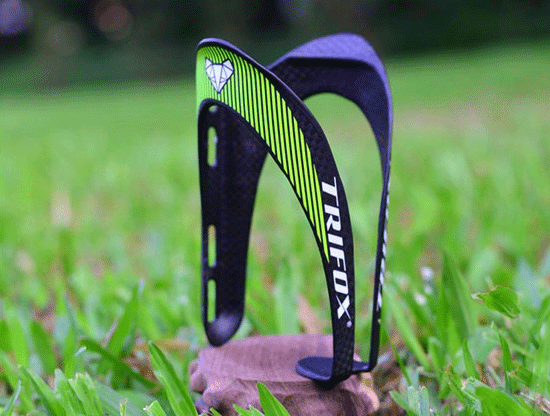
Are you in search of a reliable and durable water bottle holder for cycling? Look no further than the Trifox Bike Water Bottle Holder CBC100. This carbon fiber bottle cage boasts a thick version style and is compatible with mountain bikes, road bikes, and gravel bikes. In this comprehensive review, we will examine the top features of the Trifox Lightweight bottle cage CBC100, including its design, material, compatibility, weight, and sturdiness. Design: The CBC100 features a sleek, yet practical design with its thick version style. It measures 14 * 7.5cm / 5.5 * 3.0in (L * D), making it easy to slide in (or out) a water bottle while cycling. One of the key design features of the CBC100 is the inside of the cage, which is coated with a layer of rubber. This rubber layer helps to keep your water bottle securely in place while riding, preventing it from bouncing around or falling out completely. Material: This bottle cage is constructed from high-quality carbon fiber material - T800. This means that it is super lightweight (only 28g ± 2g) yet sturdy. The carbon fiber material ensures that the bottle cage remains corrosion-resistant and durable over time. It is also easy to clean, requiring just a simple wipe down after use to leave it looking as good as new. Compatibility: The Trifox Lightweight bottle cage CBC100 is compatible with a wide range of bike types, including mountain bikes, road bikes, and gravel bikes. This allows you to use it on your primary bike and any backups you may have. Moreover, it is also suitable for folding bikes. Weight: One of the major selling points of the Trifox CBC100 bottle cage is its weight. The cage is incredibly lightweight, which is beneficial for anyone who wishes to eliminate unnecessary weight from their bike or is looking to shave off some seconds from their cycling time. The cage weighs just 28g, making it one of the lightest bottle cages on the market. Sturdiness: Despite being a lightweight and sleek bottle cage, the Trifox CBC100 is also incredibly sturdy and durable. It can hold up to years of use and deformation, thanks to its carbon fiber material. You can confidently use this bottle cage on rough terrain without fear of damage or deformation. It does an excellent job of holding your water bottle in place, no matter how bumpy the ride. Conclusion: The Trifox Bike Water Bottle Holder CBC100 is undoubtedly one of the top choices for anyone in search of a lightweight, durable, and flexible bottle cage. Its carbon fiber construction provides strength and durability while maintaining its lightweight feature. It is easy to install on most types of bikes, and its thick version design ensures that your water bottle stays in place. Overall, the Trifox CBC100 is an excellent investment for anyone looking to improve their cycling experience.
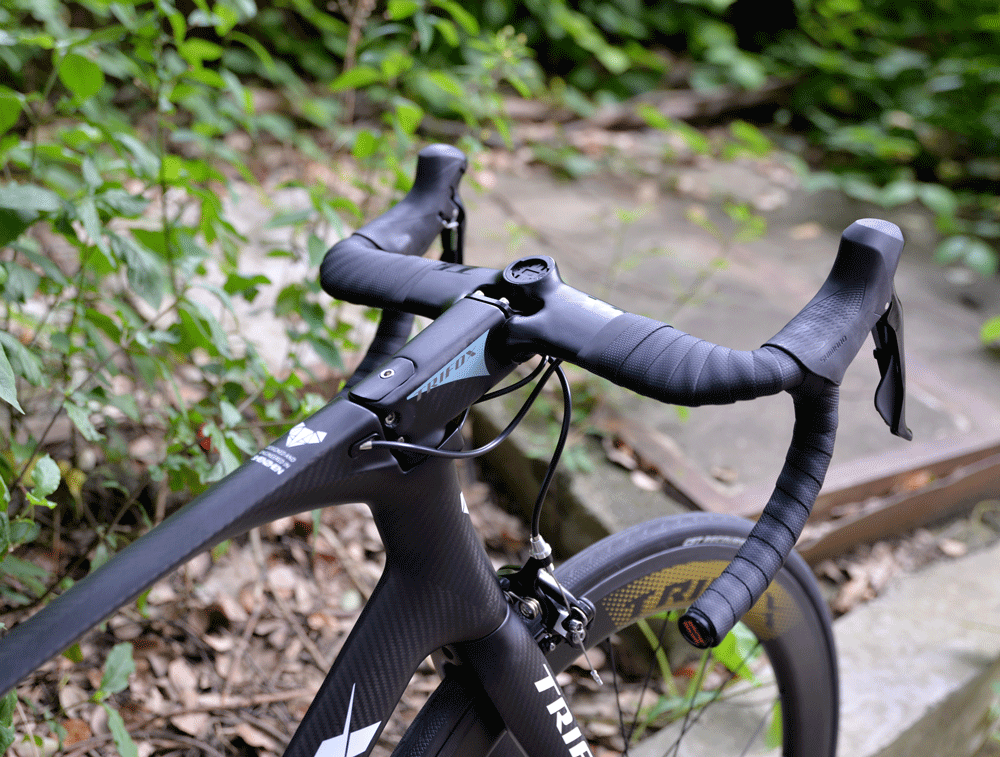
When it comes to cycling, there are many factors to consider, and one of the most important is the type of handlebars you’ll be using. If you’re looking for speed and endurance, drop handlebars could be the perfect choice for you. Not only do they allow for a more aerodynamic ride, but they also provide greater stability and better control over the bike. In this blog post, we’ll explore the art and science of bike control with drop handlebars and introduce you to the TC20UL handlebar. Handlebar shape and material: One of the main benefits of drop handlebars is their aerodynamic shape, which provides a more streamlined riding position. This improved aerodynamics can translate into enhanced speed, endurance, and overall performance. Materials used to manufacture handlebars also play a crucial role in bike control. TC20UL handlebars are made of T800 carbon fiber, which is lightweight and robust enough to withstand the rigors of long-distance cycling. The handlebar is available in four lengths - 380, 400, 420, and 440 mm - making it versatile and suitable for a range of riders. Design Elements: The handlebar’s internal cable routing design is one of its standout features. This unique design conceals cables inside the handlebar, giving your bike a cleaner look, and also improves aerodynamics. Additionally, the design of the sink in the middle and upward lift at the ends makes it easier to change riding postures and reduces the strain on your back during long-distance riding. The AERO uplift breaking wind design of the handlebar, a feature that increases the bar's efficiency in breaking wind and reduces the chance of being blown off course in strong winds. Compatibility with Accessories: The TC20UL handlebar's design is compatible with various accessories, including stopwatches such as Garmin and Bryton. The handlebar comes with a stopwatch bracket, allowing riders to keep accurate track of riding times. This feature may be crucial to road racers or long-distance touring enthusiasts who want to measure their progress accurately. What are the benefits to riders? The benefits of drop handlebars include better control and handling over the bike, making it easier to navigate steep descents and tight corners. Additionally, due to their aerodynamic shape, drop handlebars can reduce wind resistance and increase speed. The comfortable geometry of the TC20UL handlebar's uplift design also allows riders to take a more natural, comfortable grip and minimize fatigue when riding for long hours. Conclusion: The TC20UL handlebar is a versatile and high-quality drop handlebar that offers riders improved aerodynamics, greater stability and control of their bikes, and compatibility with various accessories. The internal cable routing design reduces drag and looks clean while significantly improving riding comfort thanks to its sink in the middle and upward lift at the ends. The uplifting AERO design is well-suited to riders who enjoy the road, gravel, and cyclocross riding. Drop handlebars are a popular choice among experienced riders and have become synonymous with speed and performance. By understanding the benefits of drop handlebars and selecting high-quality options like the TC20UL, you can take your riding to new heights.
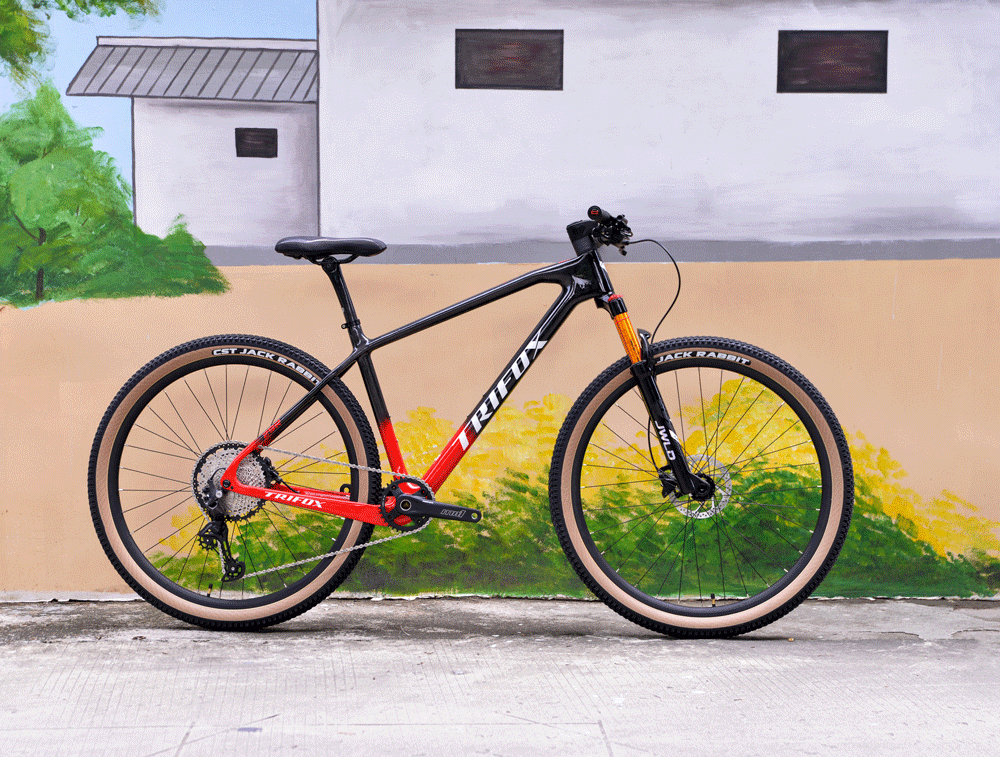
Mountain biking is a thrilling outdoor activity that is enjoyed by many. But, to ride smoothly and comfortably, you need the right equipment. One of the most critical components of your bike is the frame. A strong, lightweight, and sturdy frame can ensure a smooth and effortless ride. In this blog post, we'll take a closer look at the MTB Carbon Frameset: 29er Full Internal Hardtail SDY21, an exceptional choice for serious mountain bikers. 1. T800 Carbon Fiber, Ultra-lightweight, UD Matte Finish The SDY21 mountain bike frame features T800 carbon fiber, offering ultra-lightweight performance and a Red gradient, full glossy painting. This state-of-the-art material is known for its excellent strength-to-weight ratio, which provides a rigid and responsive ride. With an estimated weight of 1150 grams for a size medium, this frame is exceptionally light, making it perfect for competitive racing or just a fast and fun trail ride. 2. New Seatpost to prevent slipping The SDY21 frame comes with a particle paint finish, which helps to prevent the seat tube from descending, ensuring a secure and stable ride. This means you can ride more confidently on steep inclines and declines without worrying about the seat shifting. 3. Streamlined Internal Cabling, simple and beautiful The internal cable routing of the SDY21 frame simplifies the routing of cable housings and brake hoses, enabling a neat and tidy setup with ease. The process of feeding and securing the cables within the frame can be completed swiftly and efficiently. 4. Flexible tire compatibility TRIFOX Hardtail Frame SDY21 is designed for swift performance, facilitating the use of 29er *2.4'' wheels as standard, enabling you to confidently navigate diverse terrains. The SDY21 frame takes on tough terrains and provides a smooth ride, even in challenging locations. 5. Replace multiple O.L.D styles The SDY21 frame can accommodate various hub widths, including traditional quick-release systems with a 135mm O.L.D. or a modern thru-axle design with a wider 142mm O.L.D or 148mm BOOST, adapting to your cycling requirements. This flexibility extends to different derailleur hangers as well, ensuring a smooth and efficient gear shifting experience irrespective of your setup. To sum it up, the MTB Carbon Frameset: 29er Full Internal Hardtail SDY21 provides an overall exceptional biking experience that is ideal for mountain bikers. With its lightweight and sturdy frame design coupled with advanced features such as a particle paint finish, streamlined internal cabling, flexible tire compatibility, and adaptability to various hub widths, this bike frame is an excellent choice for anyone who is serious about their mountain biking hobby. So whether you're a casual rider, just starting out, or an experienced pro looking for a competitive edge, the SDY21 mountain bike frame is sure to offer years of trouble-free performance and an enjoyable mountain biking experience.

When it comes to bicycles, the hub is an essential part that holds the wheel in place. Over the years, the design of the hub has undergone significant changes. From quick-release setups to thru-axle and boost options, bike makers have continuously strived to improve the experience for bike riders. The hub spacing has become one of the most critical aspects of bike design. If you're looking to buy a new bike or upgrade your existing one, it's essential to understand the differences between hub spacing standards. This article will take you through the different hub spacing standards, their benefits, and which one would be best for you. 1) Quick-Release The quick-release standard was the most common hub spacing standard in the past. It involved a simple setup where the hub was held in place by a skewer that passed through the axle. It made it easy for the rider to change a flat tire or remove the wheel. The quick-release standard is still common in road bikes and some mountain bikes. Its disadvantage is that it's not as stiff as the newer options, making it unsuitable for demanding mountain bike applications. 2) Thru-Axle The thru-axle configuration involves a larger diameter axle that passes through the hub and the fork, locking the wheel in place. The thru-axle standard offers better stability and stiffness compared to the quick-release. This makes it more suitable for mountain bikes and other high-performance bicycles. The thru-axle standard has become popular in recent years, and it's likely to become the standard hub spacing for most bicycles. 3) Boost Boost is a hub spacing standard developed by mountain bike makers to improve the stiffness and handling of mountain bikes. Boost spacing involves a longer thru-axle and wider hub spacing than standard thru-axle spacing. The wider spacing provides more clearance for wider tires and improves the bike's stability. The Boost spacing standard has become popular in recent years and is now common in most new mountain bikes. 4) Super Boost Super Boost is a hub spacing standard developed to improve the handling of bikes with plus-size or fat tires. It features an even wider spacing than Boost, making it more comfortable to handle larger tires without sacrificing stability. Super Boost standard is not yet a common feature in most bicycles, but it's popular in some high-end mountain bikes. 5) Which Hub Spacing Standard is Best for You? The choice of the hub spacing standard you choose depends on the bike's intended use. If you're looking for a road bike, the quick-release standard is still suitable. However, for mountain bikes, the thru-axle or Boost standard is the better option, offering better stiffness and stability. If you're looking to fit plus-sized tires or fat tires, the Super Boost standard would be the best option. Conclusion: Understanding hub spacing standards is essential when it comes to buying a new bike or upgrading your existing one. Each standard has its benefits and drawbacks, making it essential to choose one that suits your needs. While the quick-release standard is still prevalent in road bikes, the thru-axle and Boost/Hope hub spacing standards are becoming more popular in mountain bikes. The Super Boost standard is still a new concept, but it's gaining popularity, especially in fat tire bikes. In conclusion, the choice of hub spacing standard depends on the type of riding you intend to do, and it's essential to choose one that suits your needs.
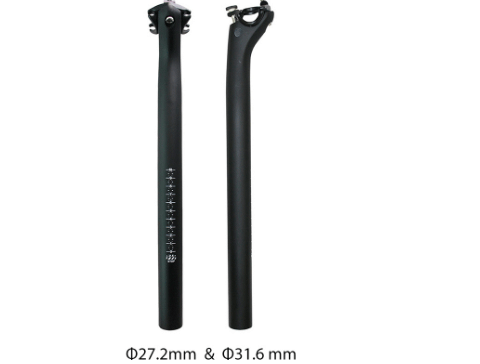
Whether it’s for daily commute or weekend trail rides, cycling is a great way to maintain our health and well-being. However, there are certain factors that can hinder our comfort while riding, leading to pain or injuries. One such factor is the seatpost, which connects the saddle to the bike frame. It may not seem like a big deal, but the angle, length, and material of the seatpost can significantly impact the way you feel on the bike. In this blog post, we’ll discuss how layback seatposts can help maximize your cycling comfort and provide a review of Trifox 400mm Carbon MTB Layback Seatpost CDS100. A layback seatpost is different from a traditional or straight seatpost in that it has a backward angle, which positions the saddle further behind the pedals. This puts you in a more upright and relaxed posture on the bike, reducing the strain on your lower back, hips, and shoulders. Additionally, it gives you more room to move around the saddle and shift your weight, which can come in handy during long rides or technical sections. Layback seatposts come in different degrees of angle, usually ranging from 10 to 30, depending on the type of riding you do and your body geometry. Trifox 400mm Carbon MTB Layback Seatpost CDS100 is one of the best layback seatposts on the market today, especially for mountain biking. Made of high-quality carbon fiber T800, it is lightweight, flexible, and strong enough to withstand rough terrains and impacts. The length of the seatpost is 400mm, which is long enough to accommodate a wide range of riders and saddle positions. The layback angle is 20 degrees, which is the sweet spot for most riders, providing a good balance between comfort and control. The layback offset is 20mm, which means the saddle position is pushed back by 20mm from the center of the seatpost. The diameter of the seatpost can be either 27.2mm or 31.6mm, which fits most standard frames and saddles. The screws are made of titanium, which is light and durable, and the finish is UD matte, which gives a sleek and professional look. Installing Trifox 400mm Carbon MTB Layback Seatpost CDS100 is easy and straightforward. Depending on your bike frame, you may need to use an adapter or shim to match the diameter of the seatpost. Once the seatpost is in place, adjust the saddle position and angle to your liking and tighten the screws. It’s important to use a torque wrench and follow the manufacturer’s recommended torque specs to avoid over-tightening or under-tightening, which can damage the seatpost or saddle rails. Riding with Trifox 400mm Carbon MTB Layback Seatpost CDS100 is a joy. The backward angle of the seatpost provides a stable and comfortable platform, allowing you to maintain a good pedaling rhythm and absorbing the bumps and vibrations of the trail. The flexibility of the carbon fiber reduces the harshness of the ride and dampens the noise. The length of the seatpost gives you room to adjust your saddle position for different terrains or riding styles. The screws are easy to access and tighten without any slipping or creaking. Overall, Trifox 400mm Carbon MTB Layback Seatpost CDS100 is a great investment for any mountain biker who wants to improve their comfort and performance. Conclusion: Layback seatposts can make a big difference in your cycling comfort and Trifox 400mm Carbon MTB Layback Seatpost CDS100 is a prime example of how a high-quality seatpost can enhance your riding experience. The carbon fiber construction, 20-degree layback angle, 20mm layback offset, and titanium screws all contribute to a lightweight, durable, and comfortable seatpost that can handle any trail you throw at it. Whether you’re a beginner or a pro, a casual rider or a racer, a layback seatpost can help you ride longer, stronger, and happier. So, don’t let your seatpost hold you back, invest in a layback seatpost and enjoy the ride!
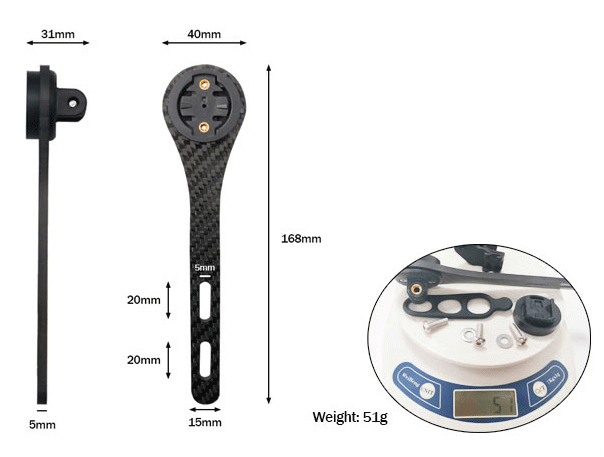
Cycling has always been a preferred mode of transport for fitness enthusiasts, commuters, and sportspeople. Technological advancements have led to the creation of various gadgets and accessories that enhance a cyclist's experience. One such accessory is the handlebar Garmin mount that allows cyclists to record their riding experience and access data on their device at a glance. In this blog post, we will explore the Trifox Carbon Handlebar Computer Mount SBH100 and highlight its features. We will also discuss its compatibility with different bike computers and cameras that support various brands. The Trifox Carbon Handlebar Computer Mount SBH100 is an excellent accessory for cycling enthusiasts looking for a high-quality carbon Garmin mount. Made from carbon fiber, this mount is incredibly light and durable, which makes it ideal for long-distance bikepacking trips. Its sleek design helps to reduce wind drag, improve your visual field, and ensure safety on the road. Additionally, it comes with a Gopro Mount, which makes it a valuable accessory for sports enthusiasts looking to capture their adventures on camera. One of the main advantages of this mount is its compatibility with a wide range of bike computer brands and models. The mount supports the GARMIN EDGE Series Bike Computers. It's also compatible with Bryton Rider Series Bike Computers (Rider10, 310, 330, 530, 410) and CATEYE's full line of bicycle computers. Therefore, you don't need to worry about compatibility issues with different bike computers. In addition to its compatibility with different bike computers' brands, Trifox Carbon Handlebar Computer Mount SBH100 is also compatible with cameras that support the Gopro camera holder and the same interface. Therefore, sports enthusiasts can easily mount their camera and capture their exciting experiences on the road. The mount’s lightweight design ensures that additional weight on the handlebar does not affect the rider's performance. Another great feature of the Trifox Carbon Handlebar Computer Mount SBH100 is that it comes with a light holder that supports bicycle lights that do not exceed 25mm in diameter. Therefore, you can ride safely and confidently in low-light conditions knowing that you have a reliable light holder that secures your light to the handlebar. In summary, the Trifox Carbon Handlebar Computer Mount SBH100 is a valuable accessory for any cycling enthusiast looking to enjoy their rides while having the convenience of recording their experience, capturing their adventures on camera and ensuring their safety on the road. Its compatibility with many bike computers and cameras and its sleek design make it the perfect addition to your cycling gear. Get yours today and take your cycling experience to the next level!

As an avid cyclist, you know that every little detail of your bike matters. One such detail that often gets overlooked is the handlebar end caps. These small but crucial components safeguard your handlebars against wear and tear, and also play a role in enhancing your bike's aesthetics. In this blog post, we'll take a closer look at handlebar end caps, their importance, and how to choose the right ones for your bike. Firstly, let's understand why handlebar end caps are important. These caps prevent dust, debris, and moisture from entering your handlebars, which can potentially cause damage to the internal components. Handlebar end caps also serve as a buffer in case of accidents, protecting your bike from scrapes and dents. Additionally, handlebar end caps can elevate the overall look of your bike. There are myriad end cap design options that can add character and personalization to your ride. When it comes to choosing the right handlebar end caps, there are various factors to consider. The first is the type of handlebars you have. End caps come in different shapes and sizes to fit different handlebar types, including drop bars, flat bars, and riser bars. It's crucial to choose the end caps that are designed for your specific handlebar type to ensure a snug fit. The material of your handlebar end caps is another important aspect to consider. While there are plastic end caps available, metal end caps tend to offer better durability and longevity. Metal end caps are often made from aluminum or alloy and can withstand wear and tear over time, making them a better investment. One example of a high-quality handlebar end cap is the Trifox Bicycle Handlebar End Stoppers. These end caps offer a firm and safe mount with their expansion PP base, while the alloy mainframe and CNC-machined finish offer both durability and an attractive look. The Trifox end caps are also lightweight, weighing only 24 grams per pair, so they won't add unnecessary weight to your ride. They're easy to install, so you don't need to worry about any complicated installation processes. Handlebar end caps may seem like a small and insignificant bicycle component, but they play a crucial role in protecting your handlebars and adding a touch of personalization to your ride. When choosing end caps, make sure to consider the type of handlebars you have and invest in high-quality metal end caps that will last you a long time. With the Trifox Bicycle Handlebar End Stoppers, you can rest assured that you're getting a durable and stylish option that will enhance your cycling experience.
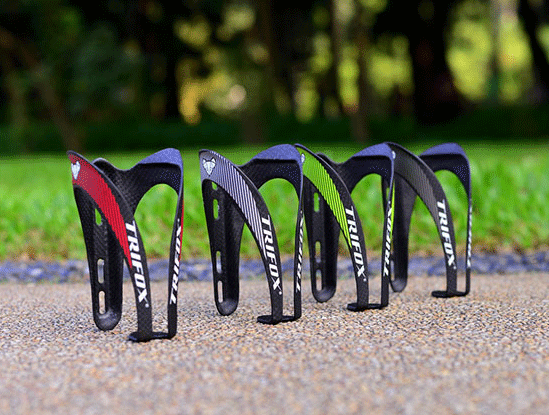
As an avid cyclist, it's important to stay hydrated on long rides. However, having a water bottle bouncing around in your backpack or attached to your handlebars can be both distracting and potentially dangerous. That's where the Trifox bicycle Water Bottle Holder comes in. This lightweight carbon fiber holder securely attaches to your bike frame, so you can easily reach for a refreshing sip of water whenever you need it. Firstly, let's talk about the Trifox Bike Water Bottle Holder's material. Made from high-quality carbon fiber T800, this holder is lightweight yet strong and durable. It can withstand the bumps and jolts of even the toughest mountain bike trails, and won't weigh you down during long rides. Plus, its sleek design makes it a stylish addition to any bike frame. But what about compatibility? The Trifox Bike Water Bottle Holder is designed to fit a variety of bike frames, including mountain bikes, road bikes, and gravel bikes. Its max diameter of 14 * 7.5cm / 5.5 * 3.0in (L * D) means it can hold just about any standard water bottle. And with its simple installation process, you can easily attach the holder to your bike frame and be on your way in no time. Now, let's talk about colors. The Trifox Bike Water Bottle Holder comes in four eye-catching colors: red, silver, green, and gray. Whether you want your bike to make a bold statement or blend in more subtly, there's a color to suit your style. And with its sleek design and high-quality material, you can be sure that this holder will look great on any bike frame. But what about weight? No one wants to add unnecessary weight to their bike, especially if they're planning on long rides. Luckily, the Trifox Bike Water Bottle Holder is incredibly lightweight, weighing in at just 28g ± 2g. This means you can stay hydrated without feeling weighed down, even on the longest rides. Finally, let's talk about convenience. The Trifox Bike Water Bottle Holder allows you to easily access your water bottle while on the go, without the risk of it falling out of your backpack or jostling around on your handlebars. This means you can ride with confidence, knowing that you can quickly and easily hydrate whenever you need to. Conclusion: The Trifox Bike Water Bottle Holder is a must-have accessory for any cyclist. Its sleek design, high-quality material, and compatibility with a variety of bike frames make it a versatile and stylish addition to any ride. And with its lightweight construction and convenient access to water, you can stay hydrated and focused on the road ahead. So next time you hit the trails or the open road, make sure you have the Trifox Bicycle Water Bottle Holder by your side (or, more accurately, your bike frame).

When it comes to cycling, bike enthusiasts take every possible step to make their ride smooth and comfortable. Be it the frame, wheels, or suspension of the bike, the rider always aims for the best. However, the one component that cyclists often overlook is the handlebars. Bike handlebars play a crucial role in ensuring rider comfort, positioning, and control. With advancements in technology, there are several types of cycle handlebars available in the market that cater to different styles of riding. 1. Mountain Bike Handlebars Mountain bike handlebars can be classified into two types: riser and flat. Riser handlebars have a curved shape, providing extra height to the rider's grip. These bars are ideal for riders who prefer an upright riding position, allowing them to observe their surroundings while riding. Flat handlebars, as the name suggests, are straight bars without any curvature. They are best suited for riders who prefer a more aerodynamic riding position. Flat handlebars provide a better grip that allows riders to maneuver the bike easily. 2. Road Bike Handlebars Drop bars are the most common type of handlebars used in road bikes. Drop bars have a distinctive shape that descends downwards, providing a variety of hand positions to the rider. Drop bars are ideal for long rides as they offer multiple hand positions, allowing riders to change their grip and relieve pressure on their palms. The aero drop bar, a variation of the drop bar, has a flat top section that allows riders to rest their hands, minimizing wind resistance. 3. Carbon Fiber Integrated Handlebars Carbon fiber integrated handlebars are a popular choice among road and triathlon riders. These handlebars have an aerodynamic design that minimizes wind resistance and enhances overall bike performance. Integrated handlebars have the shifters, brakes, and cables built into the bar, giving the bike a clean and streamlined look. 4. Carbon Fiber Riser Handlebars Carbon fiber riser handlebars are similar to mountain bike riser handlebars but are made up of carbon fiber. Riser handlebars have a shorter reach, offering more control and grip, and are ideal for technical riding. Carbon fiber riser handlebars are lightweight and provide excellent shock absorption, making them a popular choice among mountain bikers. 5. Carbon Fiber Flat Bars Carbon fiber flat bars are straight bars that appeal to those looking for an aerodynamic riding position. These handlebars provide an excellent grip, allowing riders to control the bike with ease, and are ideal for road racers. Conclusion: Cycle handlebar are an essential component of your bike and can make or break your cycling experience. Understanding the different types of cycle handlebars available in the market can help you choose the best one for your riding style. Whether it is a mountain bike or a road bike, riser or flat, integrated or not, there is a handlebar option for everyone. Investing in a good set of handlebars can go a long way in improving your ride's comfort, positioning, and control. So, go ahead, upgrade your bike, choose the perfect handlebars for your riding style, and revolutionize your ride!

















